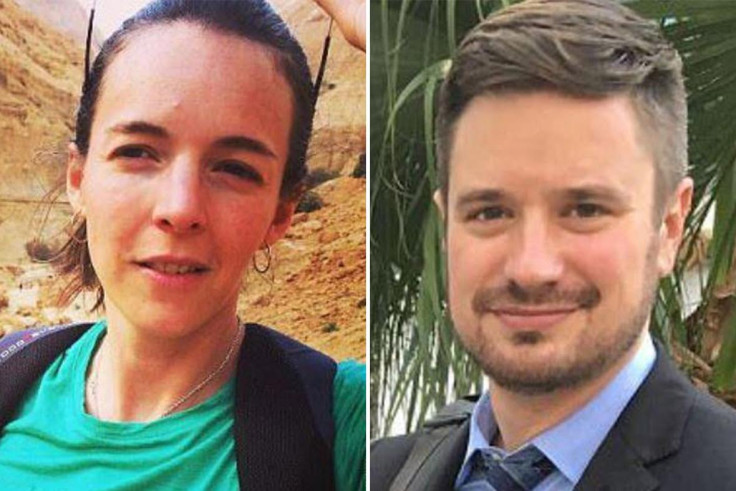DRC government under fire for airing video showing brutal execution of UN experts in Kasai
Michael Sharp and Zaida Catalan went missing on 12 March as they investigated rights abuses.

The government of the Democratic Republic of Congo (DRC) has come under fire for broadcasting a video allegedly showing the brutal killing of two United Nations (UN) experts by suspected militiamen in the restive Kasaï region.
The Congolese government and later the UN, last month, confirmed two bodies discovered in a shallow grave were those of Michael Sharp, a US citizen and Swedish national Zaida Catalan, 36, who had gone missing on 12 March near the town of Tshimbulu.
Sharp, who was a coordinator with the UN Group of Experts for Congo, and his colleague had travelled to the Kasai-Central region to investigate summary executions of civilians and recently discovered mass graves when they were reported to have been kidnapped – alongside their Congolese translator and three local drivers.
Earlier this week (24 April), the Congolese authorities screened a shocking video to the press of the execution of the two UN experts – footage which had so far been in the hands of the investigating justice system.
In the video, two individuals who appear to match the experts' description and whose hands are not tried, are seen walking with a group of men armed with machetes, batons and a gun, across fields. The men, who are wearing Kamuina Nsapu's red band around their heads symbolising militia membership, said they wanted to take the investigators to a mass grave site, according to the police spokesman.
The two experts then sit on the ground. The man is killed at gunpoint, followed by his female colleague. Two men, who seem to be following the instructions of others off-camera, cut off a few strands of the young woman's hair before beheading her.
It is understood that the government may have decided to broadcast the video to show the violence with which Kamuina Nsapu militia group operates. The government's spokesman Lambert Mende has previously described the group as "terrorists" and has denied allegations security forces were behind the slayings.
"We are not adamant [that the killers are Kamuina Nsapu], we are not judges. We have images that show Kamuina Nsapu doing that. If they are not Kamuina, the judge will say so. But we have shown what is needed to stop talking about the police and the army. Those who accuse the armed forces also have no (proof)," Mende is quoted as saying by RFI.
Government under fire for showing footage
While both the UN and the Congolese government are carrying out independent investigations, the motive for the executions and reasons why the killers would take the time to film such compromising footage remain unknown.
Through its spokesman Stéphane Dujarric, the UN said it was shocked by the government's decision to show the footage to the press arguing this element could conceivably hinder the investigation. The UN's peacekeeping mission to DRC (Monusco) echoed this view.
Human rights NGO Association Africaine de défense des droits de l'homme (African Association for the Defence of Human Rights, ASADHO) on 26 April claimed the video was broadcast to manipulate and direct the investigating military justice towards a single lead, and steer public opinion towards believing in the guilt of the "militiamen of Kamuina Nsapu".
Kasaï, in the heart of the DRC, has been plagued by violence between the Congolese security forces and Kamuina Nsapu, who are seeking to avenge the death of their leader, Kamuina Nsapu, in August 2016.
While the rebels have launched attacks against State institutions and symbols, the UN warned of the disproportionate use of force by the security and defence forces and the targeting of civilians, including women and children.
© Copyright IBTimes 2025. All rights reserved.






















